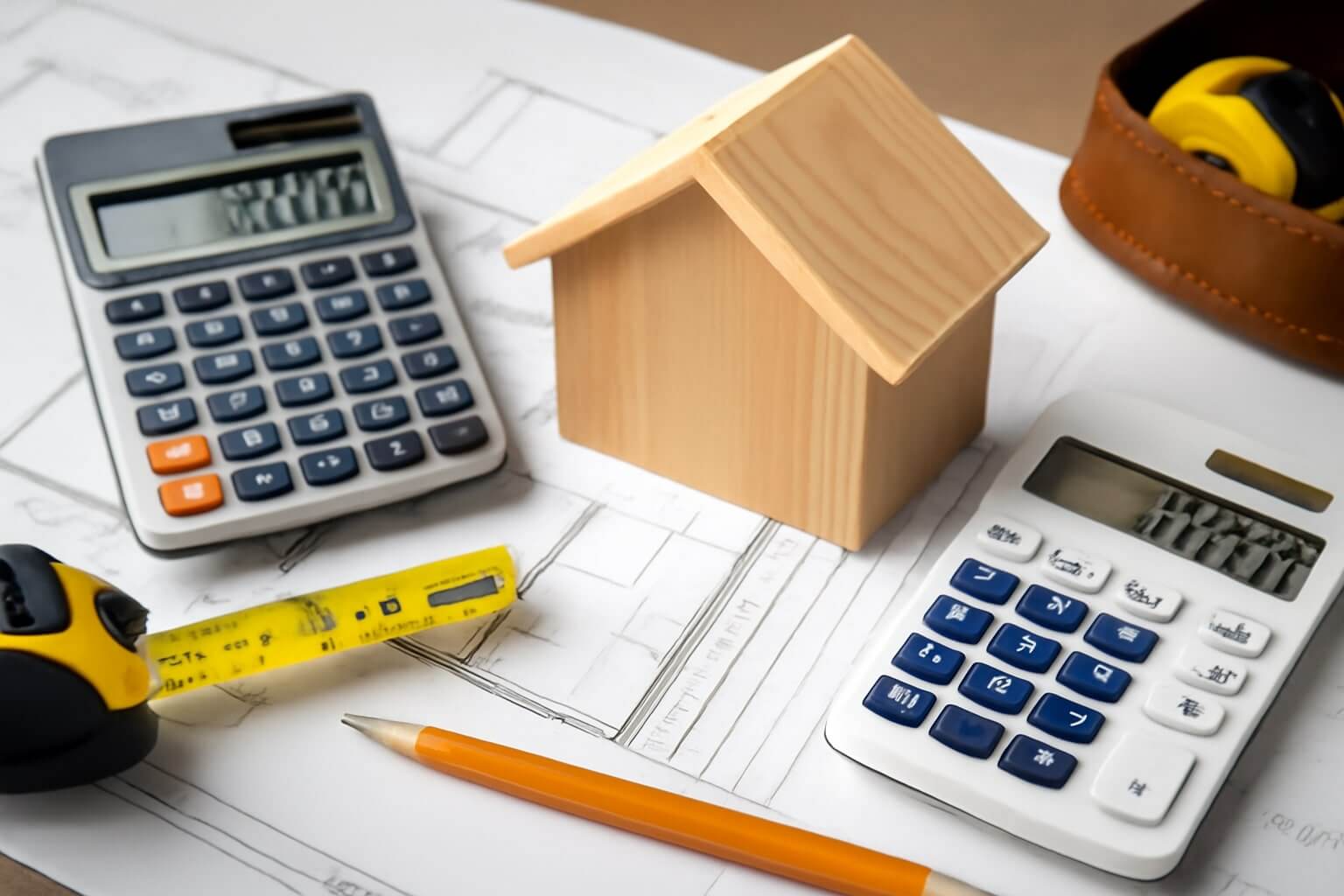When you’re planning a home addition, managing costs can be tricky. That’s where free calculators come in handy. They can help you estimate everything from square footage to labor costs, ensuring you stay on budget. With the right tools, you’ll gain clarity on your financial needs and streamline the entire process. Curious about which calculators can make your project easier and more efficient? Let’s explore the essential options available to you.
Key Takeaways
- A square footage calculator helps determine space requirements and budget for home additions based on intended use and existing layout.
- Material cost estimators allow homeowners to gauge expenses based on various materials, aiding in informed budgeting decisions.
- Labor cost calculators provide estimates for hiring skilled workers, ensuring budget management and clarity on potential expenses.
- A home addition budget planner helps outline total project costs, including materials, labor, and permits, to prevent financial strain.
- Permitting cost calculators streamline the permitting process by providing cost breakdowns and ensuring compliance with local regulations.
Square Footage Calculator
When planning a home addition, understanding square footage is essential for budgeting and design. Knowing how much space you need helps you identify square footage benefits, like increased functionality and improved property value.
Start by measuring your existing layout and consider how the new addition will flow with it. Factor in the intended use—whether it’s a family room, office, or extra bedroom.
Pay attention to square footage considerations, such as local zoning regulations and potential impact on your yard. This clarity not only aids in planning but also guarantees you stay within budget without sacrificing your vision.
Material Cost Estimator
When planning your home addition, understanding material costs is essential for staying within budget.
Different material types can greatly impact your overall expenses, and estimating the quantity accurately is key to preventing surprises.
Plus, keep in mind that prices vary by region, so knowing local rates can help you make informed choices.
Material Type Impact
Choosing the right materials for your home addition can considerably influence your overall budget. Material quality plays a significant role in not just aesthetics but also durability and maintenance costs. Higher quality materials may carry a steeper initial price tag, but they can save you money in the long run.
Additionally, consider your material sourcing—local suppliers often provide better prices and quicker delivery than distant options. By carefully balancing quality and sourcing, you can create a stunning addition without breaking the bank.
Using a material cost estimator will help you gauge the financial impact of your choices effectively.
Quantity Estimation Techniques
Accurate quantity estimation is essential for staying on budget during your home addition project. By utilizing effective quantity takeoff methods, you can determine the precise materials needed, avoiding costly overages or shortages.
Start by measuring your space and listing each material required, then apply estimation techniques to calculate totals. Understanding estimation accuracy importance helps you make informed decisions and stay within financial limits.
Consider using online calculators or software designed for this purpose—they simplify the process and enhance accuracy. Accurate estimations can save you time, money, and stress, ensuring your project runs smoothly from start to finish.
Regional Price Variations
Understanding regional price variations is essential for accurately estimating material costs in your home addition project. Cost fluctuation factors, like local demand and supply, greatly impact prices. Additionally, regional labor rates can vary widely, affecting overall expenses.
Here’s a quick overview:
| Region | Average Material Cost per Square Foot |
|---|---|
| Urban Areas | $150 |
| Suburban Areas | $120 |
| Rural Areas | $100 |
Labor Cost Calculator
When planning a home addition, knowing the labor costs can make a significant difference in your budget. A labor cost calculator helps you estimate labor rates based on your project’s scope and complexity.
By inputting details like the type of work and location, you’ll get a clearer picture of potential expenses. This tool not only aids in budgeting but also enhances project management by allowing you to allocate resources effectively.
You can avoid surprises down the road and guarantee you’re hiring skilled workers at competitive rates. Start using a labor cost calculator today to streamline your planning process!
Home Addition Budget Planner
When planning a home addition, it’s essential to estimate your total project costs accurately.
With a solid budget planner, you can track expenses effectively and avoid surprises down the line.
Let’s explore how to create a budget that keeps your project on track and within your financial limits.
Estimate Total Project Costs
Planning a home addition can be exciting, but it’s vital to keep an eye on your budget from the start.
Begin by defining your project scope clearly. This will help you understand what you want and need, which is important for accurate cost estimation.
Next, create a budget breakdown that includes materials, labor, permits, and unexpected expenses. By itemizing each aspect, you’ll gain a clearer picture of total project costs.
Don’t forget to account for potential changes in design or materials as you proceed. Staying organized will guarantee your dream addition doesn’t become a financial burden.
Track Expenses Effectively
To keep your home addition project on track, effectively tracking your expenses is essential. Good expense tracking helps you stay within budget and avoid surprises. Use a budget management tool or simple spreadsheet to monitor costs daily. Here’s a quick way to visualize your spending:
| Expense Category | Estimated Cost |
|---|---|
| Materials | $5,000 |
| Labor | $8,000 |
| Permits | $1,200 |
| Contingency Fund | $1,800 |
Permitting Cost Calculator
How can a permitting cost calculator simplify your home addition project? This tool helps you navigate the permitting requirements and streamline the application process. By estimating costs upfront, you can avoid surprises later.
Here are three key benefits:
- Cost Breakdown: Understand fees associated with permits, inspections, and approvals.
- Time Management: Gauge how long the permitting process might take, allowing for better project planning.
- Compliance Assurance: Verify you’re meeting local regulations to prevent delays or fines.
Using a permitting cost calculator can make your home addition journey smoother and more predictable.
Return on Investment (ROI) Calculator
After maneuvering through the permitting process, the next step in your home addition project is understanding its financial impact.
Utilizing a Return on Investment (ROI) Calculator helps you conduct a thorough investment analysis, allowing you to see how your addition affects property valuation. By inputting your costs and projected increases in value, you’ll gain insight into whether the project is worth pursuing.
This tool not only aids in budgeting but also empowers you to make informed decisions. Knowing your ROI can guide your choices, ensuring you invest wisely and enhance your home’s overall worth.
Financing Options Estimator
While planning your home addition, exploring various financing options can greatly impact your project’s feasibility.
Start by considering these key factors:
- Loan Types: Research fixed-rate mortgages, home equity loans, or personal loans to find the best fit.
- Interest Rates: Compare rates to guarantee you’re getting the most affordable option for your budget planning.
- Credit Scores: Check your credit score, as it affects your eligibility and terms.
Utilizing mortgage calculators can help you evaluate payment schedules, guaranteeing you choose a financing option that aligns with your financial goals.
Make informed decisions to fund your dream addition!
Conclusion
By leveraging these seven essential free calculators, you can take control of your home addition project with confidence. From accurately estimating square footage to understanding labor costs and budgeting, these tools help simplify the planning process. Don’t forget to take into account the ROI and explore financing options to guarantee your investment pays off. With these resources at your fingertips, you’re well-equipped to turn your vision into reality and create the perfect space for your home.

